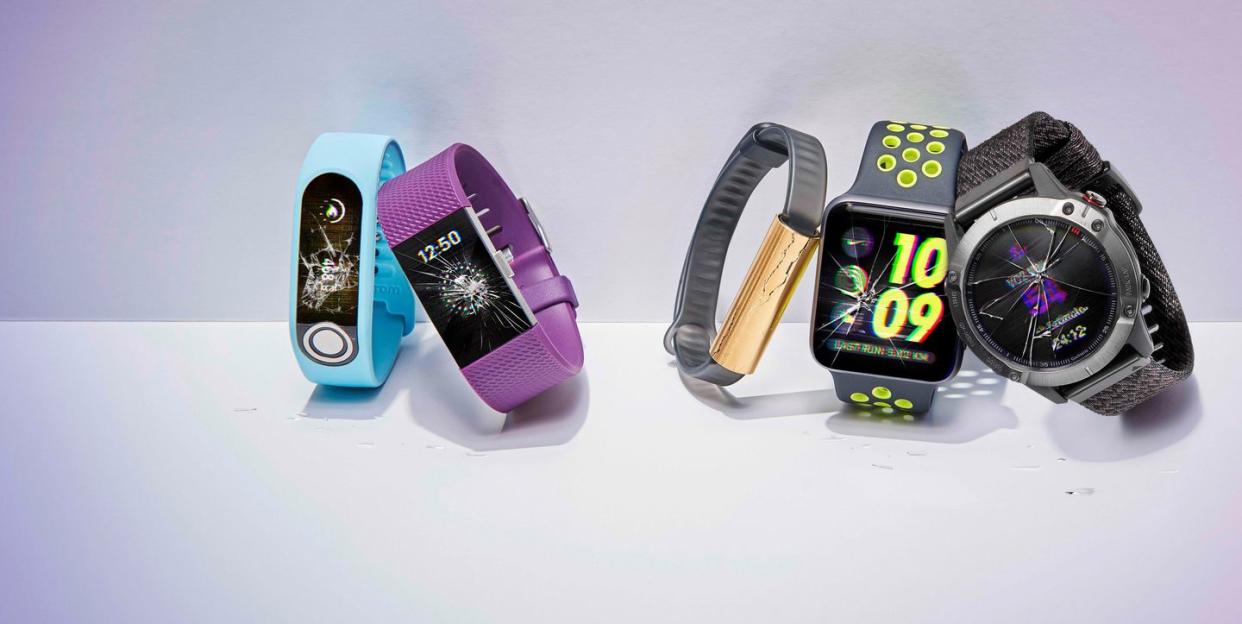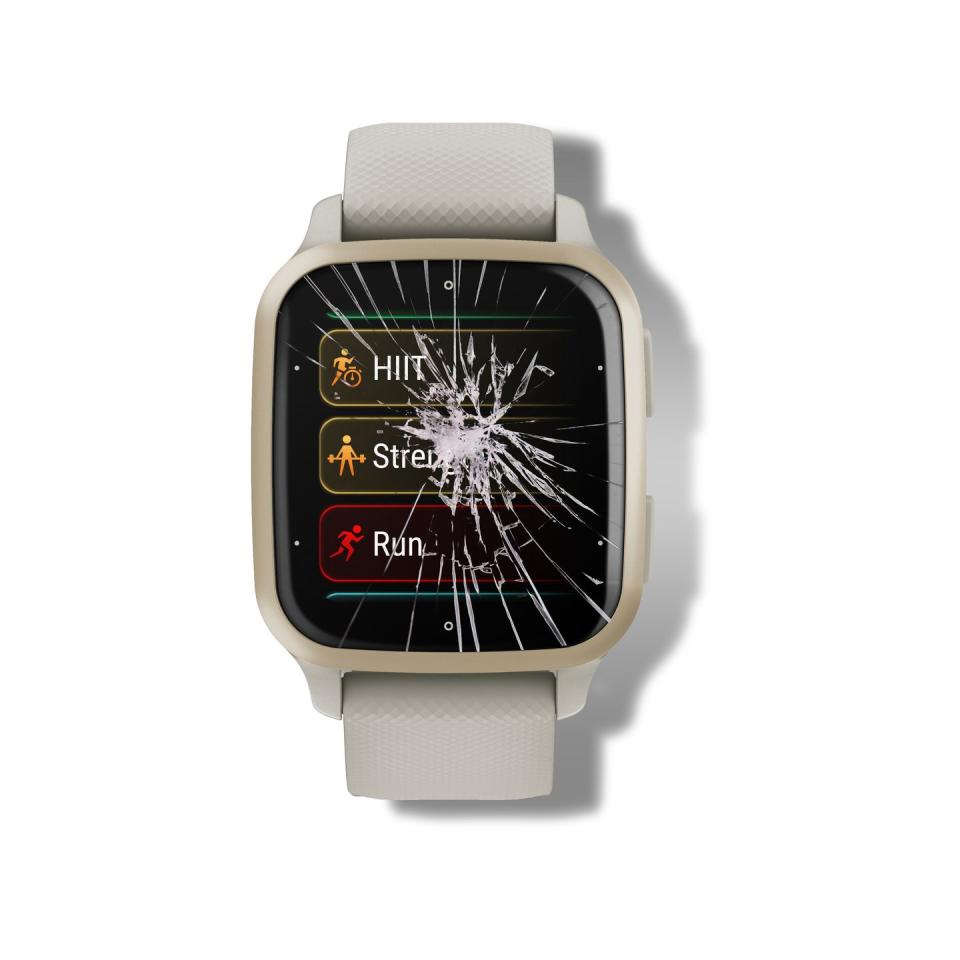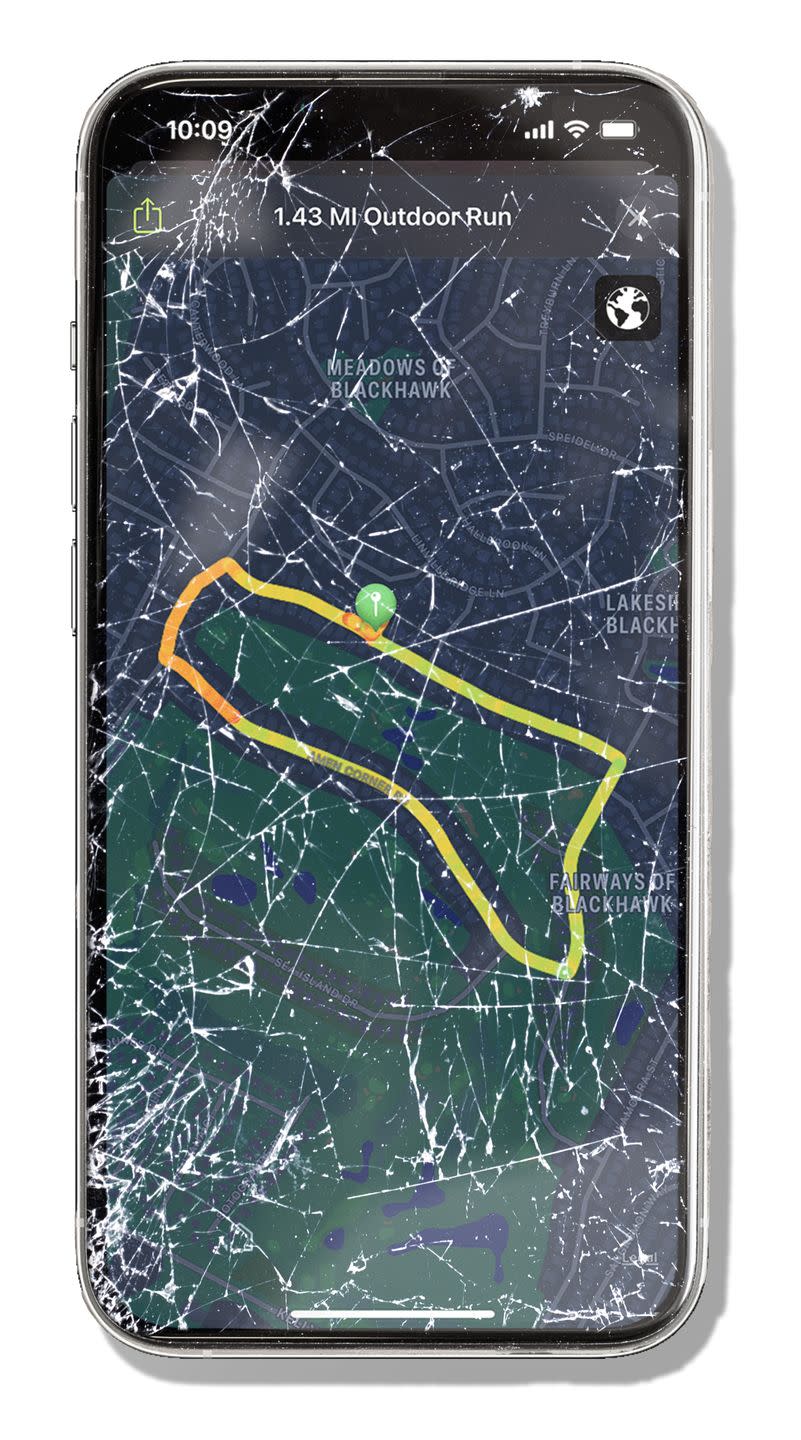Is 2024 the Year of the Low-Tech Workout?

As we enter another Olympic year, let me tell you about my favourite Olympian, Cuban long-distance runner Andarín Carvajal. He’s a man whose glory is not captured in any records, medals, metrics or really any achievements you could pin to a leader board. But I guarantee he’ll provide all the January fitness inspiration you need.
A postman by trade, Carvajal was renowned throughout his native Cuba for two things: his ability to cover great distances fast and his jovial personality. Back in 1904, this was enough to put him on a steamship over the Gulf of Mexico to represent his nation at the St Louis Olympics. He arrived in New Orleans, where he promptly lost his life savings in a game of craps. He then hitch-hiked the 1,000km to St Louis, mislaying his running attire on the way. When he took his place at the start of the marathon, it was in heavy worker boots and a nightshirt – much as I would imagine many subsequent Olympians have done in their pre-race nightmares. Happily, a friendly discus thrower helped him to cut the legs off his trousers.
When the race began, Carvajal soon lost sight of the front runners. For obscure reasons, the event had been organised in the 32°C midday heat, with minimal water available, down a busy road. There was dust. There was livestock. There were spectators in jalopies. There was brandy and strychnine for the competitors who collapsed. Many did. A couple nearly died. One was disqualified after it emerged he hitched a lift for 10 miles. As for Carvajal, he maintained a slow and steady pace, practising his English with the spectators and accepting peaches from passing cars. At one point, he became lost in an orchard where he ate some apples – and threw up. The apples were rotten. After a short nap, he found his way back to the stadium where to his enormous surprise, he finished in fourth place.
Sign up to the Men's Health Squad, here!
Why does this example echo across a century? Because Carvajal’s run is the antithesis of everything that sport has become in the age of data and wearables and biomechanics analysis and anthropometrics. I don’t just mean the Mickey Mouse amateurism of the event. I mean that by all the measures we have come to value, his run was a failure. Carvajal finished out of the medals in the slowest-ever Olympic marathon. The bronze medallist finished with a time of 3:47:33. Carvajal’s time wasn’t even recorded. For an amateur, that would simply not be good enough these days. ‘If it’s not on Strava, it didn’t happen,’ is the unofficial catchphrase of the wildly popular exercise-sharing platform, which now counts well over 100 million users. By which logic, Carvajal may as well have stayed home in Havana. It literally didn’t count.

So entrenched has this logic become at all levels of sport and fitness, I imagine that most of us can’t contemplate leaving the house for exercise without some means of measuring ourselves. The global sports tech market is predicted to grow by more than 20% each year until 2030, when it will be worth more than $55bn (£44bn). And sports tech encompasses everything from Garmin GPS watches that feed runners real-time data about race pace, VO2 max and heart rate zones, to the human annotators calculating Premier League xG stats in Philippines data centres and the Fitbit reminding you that you’ve yet to hit 10,000 steps.
Our devices can measure everything from sleep optimality to running cadence, strain to calories. Everything – except the whole reason most of us engage in physical activity in the first place, which is because it’s fun. Or it’s supposed to be, anyway.
Does It Add Up?
There’s little doubt that this technology has revolutionised elite sport. We’ve even made heroes of those who have harnessed it effectively: Sir David ‘Marginal Gains’ Brailsford in cycling; Billy ‘Moneyball’ Beane in baseball, while the battle of the supershoe between the Adidas Adizero Adios Pro 3 and the Nike Vaporfly has become a whole sideshow in itself. ‘It’s a super-exciting time,’ says Ben Scott, head of marketing at the high-end apparel company, Rheon Labs. ‘Formula 1 is a great example of where you’ve seen the intersection of engineering and sport. Now you’re seeing it in running with the race to break the two-hour marathon.’
Rheon Labs’s signature product is a patented polymer that’s now part of Adidas’s Adizero Control range. It was produced after three years of analysis at the University of Wisconsin’s biomechanics laboratory, on the effects of something called ‘circumferential muscle acceleration’. And if you weren’t worried about circumferential muscle acceleration before, perhaps you might be now. It’s the energy lost when the muscle shakes around the bone as your feet hit the ground. ‘It’s wasted energy,’ says Scott. ‘It’s inefficient.’
The idea, he explains, is to take the same methodology of what goes into a Formula 1 car ‘and apply it to the human body’. It’s the accumulation of such marginal gains that will make the difference between glory and failure at the Paris Olympics this summer. ‘In so many events at the Tokyo 2020 Olympics, the difference between first and fourth place was less than 1%,’ he says. ‘Your shoes, your apparel, your nutrition, your sleep and your preparation. It has a 1% effect and overall, it really does make a difference.’

No doubt. But what’s surprising is how common this mindset is among those of us who are less inclined to view our bodies as Formula 1 cars and highly unlikely to be running a sub-2:00 marathon any time soon. ‘It’s crazy how the market for this stuff has just exploded,’ says psychologist Thomas Curran, one of the world’s leading experts on perfectionism – and a recovering Strava addict. ‘It’s sort of changed the whole meaning of what it is to exercise and what sport is.’
Indeed, so ubiquitous has exercise tech become that it’s hard to remember a time before it existed. ‘I only got my race watch five years ago, but it already seems bizarre to me that I used to do hard training sessions with no idea of how far and how fast I was running,’ says ultrarunner Adharanand Finn. When he first started running as a teenager, his standard unit of measurement was one circuit of the reservoir near his house. ‘I ran around it recently and I just couldn’t believe I’d run around this lake hundreds of times without ever knowing how far it was around.’ Now his Garmin Forerunner 945 can tell him: it’s 10.55km.
But not only have we become used to measuring everything that we do. We’ve also internalised the targets these devices set us without really considering how arbitrary they are. Why 10,000 steps? It was more or less plucked from thin air by pedometer marketeers. Why am I straining so hard to cycle up the hill near my house? Well, I can see from Strava that my friend Tom did it in 53 seconds – and I can’t let that stand.
But we might just be seeing the beginnings of a revolt against this number-obsessed approach. Luke Pigden, owner of The HIIT House fitness studio in Surrey, recently discarded the Whoop wristband he’d been wearing on every run – along with a Myzone heart rate monitor, a Garmin watch, his phone hooked up to Strava and, of course, his earphones. ‘I was focusing so much on what it was telling me rather than how I was feeling,’ he says. ‘It felt robotic.’
He identifies two main problems. The first was data overload. Whoop promises to measure ‘the most scientifically significant biometric data points’. He might wake up in the morning to discover that his sleep had been only 84% optimal; or that his blood oxygen level had dipped to 96%; or that his skin was 0.7% below the baseline. Each month, he would receive a report with 20 pages of data. ‘I couldn’t even look at it in the end.’
He also struggled with the fact that the data sometimes seemed out of step with how he was feeling. ‘I would wake up in the morning and feel pretty beat up, but it would say, “You’re recovering fantastic! Another hard day of training ahead.” Then there would be times when I woke up feeling great, but my Whoop would be like, “Nope. Your recovery is bad – pull back.”’
He’s found that activity-tracking technology, more generally, can struggle to identify the difference between varying forms of exercise. A 10-minute session of bike sprints that left him ‘on the floor’ might only register as a moderate effort, while a gentle 30-minute run with a friend would set the alarm bells ringing. ‘I’m in the industry, so I’ve got the experience to understand how my body is feeling. But someone could easily look at those numbers and get the wrong idea.’
In fact, many of his clients do just this, he says. He’s noticed that his clients with Apple Watches and Garmins complain after his strength classes because their devices tell them they’ve only burned 120 calories whereas they burn 400 during high- intensity interval training. ‘If you want to go and burn as many calories as you can, go and sit on a stationary bike and pedal for two hours – you’ll burn loads of calories,’ he says. ‘But you’re not putting any resistance on your body, you’re not working on your balance, you’re also not toning your muscles – it’s just calories. And people with wearables become fixated on this. They’re not thinking, “How strong am I? How much better do I feel?” It’s all about that number.’
A Numbers Game
Beth Bell, a psychologist at the University of York, has studied our tendency to fixate upon arbitrary numbers. She highlights the difference between intrinsic and extrinsic motivations. Intrinsic motivation describes things that you do for internal rewards – typically to gain confidence, create social connections or achieve autonomy. Extrinsic motivation describes things you do to get some kind of reward.
‘When you’re using apps for the three core intrinsic motivations – confidence, connection and autonomy – that’s when we tend to see the positives,’ she says. However, when the apps begin to promote extrinsic motivations, that’s often where problems arise. ‘It might be that you’re using it to show off to other users or even that you’re just doing it to beat the app. You’re just doing it for points or to protect your “streak”. It’s no longer about you or your needs. You no longer have autonomy or independence.’
Dr Curran echoes this point. ‘There are decades and decades of research showing that if you exercise and do any sort of physical activity for those less intrinsic or integrated reasons – you need to hit targets, say, or demonstrate to other people that you’re progressing or whatever – then the enjoyment of the activity falls. The motivation becomes less sustainable in the long term because once you start to feel that you’re not meeting those targets and other people are watching you fail, then that motivation saps away.’

So, while apps such as Strava can be great at harnessing those intrinsic motivations – for connection, for competence, for a feeling that you’re improving – they can also play on our anxieties, just like any social network. Note how many of your friends post their runs and cycles with comments such as ‘Windy day’ or ‘First cycle after my cold!’ indicating that their time isn’t quite what they imagine it should be – or what they imagine you think it should be. ‘That’s classic,’ says Dr Curran. ‘That’s when you know it’s about keeping up appearances and managing impressions.’
Still, even when you understand the limits and the risks of this technology, it can be a struggle to find the right balance. Finn admits he’s in a ‘constant battle’ with his sportswatch. He’s a ‘data nerd’ and he loves to keep a record of his runs. Nevertheless, he has come to view it as an ‘irritating companion’, constantly distracting him from an activity that he used to enjoy for its own sake.
‘I can be enjoying the scenery and having great thoughts and then inevitably, halfway through, I’ll think, “Hmm, I wonder what pace I’m running?” And I’ll look at it and see: “Oooh, nine-minute miles. Maybe it would be better to get my average down.” I’ve even had moments where I’ve peeped at my watch and tripped over. It’s a warning.’
Nowadays, he puts tape over the watch to remove the temptation to look and turns off the beeps, too – another huge distraction. ‘Some runs are meditative and others are great for ideas and inspiration. The watch takes away from that.’ But he also finds that it inhibits the precise thing it’s supposed to assist: his training. Seeing the data in real time can push him to speed up or slow down, when it might not be a good idea to do so. ‘It stops you from listening to your body.’
Losing Count
As surprising as it might seem, this is a view that’s increasingly common among elite runners, too. Emile Cairess, the great British marathon hope for Paris 2024, trains with nothing more complicated than a £14.99 orange Casio.
‘I think it’s good for you mentally to be a bit disengaged sometimes, rather than feeling stressed about things that don’t need to be stressed about,’ he recently told Men’s Health’s sister publication, Runner’s World. The three-time NCAA champion Dylan Jacobs has come to a similar conclusion. ‘The runs just felt so much longer [with the watch],’ he recently told The New York Times. ‘I was kind of looking at the watch every quarter- mile to see how much longer I had left.’ Likewise, the US men’s 3000m champion Sam Prakel has similar feelings. ‘I feel like I’m in a better place when I don’t have all that data to worry about.’
In the end, it comes down to your own reasons for exercising. And those might change over time. Richard Askwith, author of Running Free, used to run competitively in the 1980s. Back then he was obsessed with his timings. Now he’s in his sixties, he couldn’t care less.
‘My body is not an F1 car,’ he laughs. ‘It’s more like a battered Nissan Micra with the panels falling off.’ And yet, he loves running more than he ever has. He does it every day, in all weathers with no watch, no phone, no headphones. ‘When you’re young, you are very performance focused,’ he says. ‘But once you hit your mid-forties, it’s a challenge keeping your motivation going. If you’re just measuring your times and your times keep getting slower – that’s very discouraging. But if you don’t focus on that and enjoy nature, enjoy the weather, enjoy the fact that you’re still able to run, then you just drink in all this wellbeing.’
He feels particularly sad that we have somehow contrived to make running – the simplest form of physical activity – so formidably complicated. ‘All you really need to be a runner is to get out the door with two functioning legs and ideally a pair of shoes of some sort. But somehow, in recent decades, the running industry has told you that you can never amount to anything unless you have all the proper kit. It’s tremendously discouraging to a lot of people.’
The same applies to just about any activity – cycling, lifting, swimming, kayaking, yoga. But running being the most basic form, it seems especially pitiful that it should have been so corrupted. There are hundreds of ways to run – and reasons to run – that don’t involve a leader board. You can run because it’s an efficient way of getting from A to B. You can run to meditate. You can run to lose yourself in nature. You can run to explore a city, speeding up at the boring intersections, slowing down for the interesting streets. You can run because it’s a great way to catch up with friends. You can run because it’s a way to get ideas. You can run while immersing yourself in an audiobook or podcast or music. You can run to achieve that moment of transcendence described by ultrarunners when you finally emerge from the pain cave around two-thirds of the way into a race and enter a state of kinetic bliss. You can run to escape from all those numbers and screens, because I’ll bet that your working life is already dominated by arbitrary targets and key performance indicators that don’t even begin to capture how you feel about your job.
And maybe – like our friend Carvajal – you can run because it seems like a laugh and you’re quite good at it. Because who now remembers the three men who finished above him on the medal table? It’s the guy with the best story that endures. Pigden says he has now dispensed with his three wearables and doesn’t even listen to music any more when he goes for a run. He prefers running at conversational pace with a friend – or simply listening to his own body. ‘It’s my meditation headspace. I don’t want notifications coming through. I get enough of that in my day job. It’s just too much to compute, isn’t it?’
You Might Also Like


